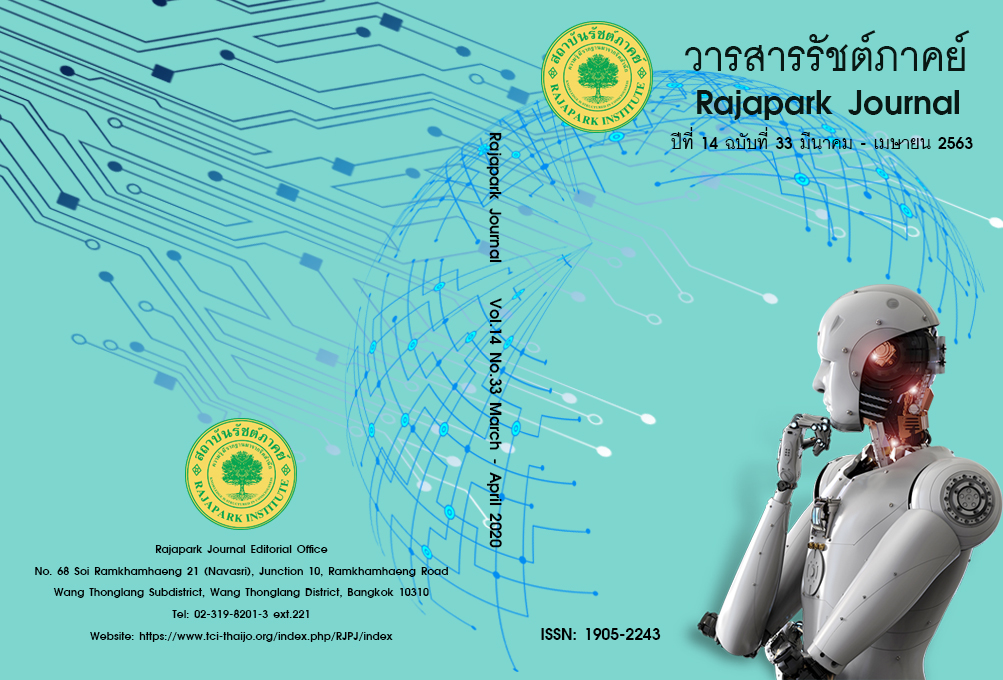Problems and Solutions for Rubber Price fall
Main Article Content
Abstract
The objectives of this article were to study the Problems and Solutions for Rubber price fall. It was found that the problem of rubber price was due to the problem of unbalanced supply and demand. This problem can be solved by using the POSDCORB management approach. There are 7 processes: 1. P = Planning 2. O = Organizing 3. S = Staffing 4. D = Directing 5. Co = Coordinating 6. R = Reporting 7. B = Budgeting. In the D = Directing step, the director can use the following strategies: 1. Supply side: 1) The government should use price policy, such as rubber price guarantee 2) non-price policy, such as support for production factors such as fertilizer, rubber varieties and 2. Demand side: The solution to this problem, the government should use price policy, such as state-to-state negotiation to break down the middleman mechanism. The policy of non-price, such as accelerating the use of rubber in the country and continuous. However, in order to solve the problem properly, should use the principle of Saraniyadhamma 6, especially Silasamabbata, strict adherence to law and regulations, and Ditthisamabbata, have mutual agreement, in order to solve the problem of rubber prices falling.
Article Details
Views and opinions appearing in the Journal it is the responsibility of the author of the article, and does not constitute the view and responsibility of the editorial team.
References
Charoenjiratrakul, S. (2011.). Extension of rubber plantation area Concern and Policy Suggestions, Research
Report. (n.p.): Office of Health Promotion Fund.
Chawawanli, P. (2014). Rubber stock, factors that should not be overlooked. Retrieved September 7, 2014, from
http://www.bot.or.th/Thai/EconomicConditions/Thai/South/EconomicPapers/ReasearchPaper/RubberStock
Daily News. (2014a). The solution to the problem of falling rubber prices. Retrieved September 6, 2014, from
http://www.dailynews.co.th/Content/agriculture/187873/
Daily News. (2014b). The former crying tree, what is the future of Thai rubber. Retrieved September 7, 2014,
from http://www.dailynews.co.th/Content/Article/156304/
Gulick, L., & Urwick, L. (1937). Papers on the Science of Administration. New York: Institute of Public
Administration.
Land Development Department. (2005). Rubber: Research report. (n.p.): Office of Land Management and
Development.
Phra Phrom Kunaporn (P.A. Payutto). (2002). Dictionary of Buddhism (11th ed.). (n.p.): Education for Peace
Foundation Phra Dhamma Pidaka (P.A. Payutto.).
Rubber Research Institute. (2010). Rubber Academic Information 2010, Research Report, Bangkok: Rubber
Research Institute, Department of Agriculture, Ministry of Agriculture and Cooperatives.
Somboonsuk, B., Witprasit, P., & Niyombandit, T. (2013). Solution to the problem of low rubber prices.
Retrieved September 6, 2014, from http://www.psu.ac.th/sites/files/n6062_doc130906.pdf
Suksamrong, S. (2014). Relationship between internal and external factors Affecting Exportation of Robber
Ribbed Smoked Sheet No. 3 to China. Master of Business Administration degree program thesis, Faculty of Business Administration, Rajamangala University of Technology Thanyaburi.
Thai FTA. (2001). Rubber and rubber products. Retrieved September 6, 2014,
from www.thaifta.com/thaifta/Portals/0/file/ascn_rubber.doc.
ThaiPBS. (2014). Cause of the problem of low rubber prices. Retrieved September 6, 2014,
from http://news.thaipbs.or.th/content.
Thansettakij. (2014). Kasikorn Thai expects Thai rubber exports this year 3.7 million tons, up 7.7, but the
value shrinks 6.5. Retrieved September 6, 2014, from http://www.thannews.th.com/index.php?
option=com_content&view=article&id=233635:-37-77-65&catid=176:2009-06-25-09-26-
&Itemid=524#.VAs2bPmSySo


